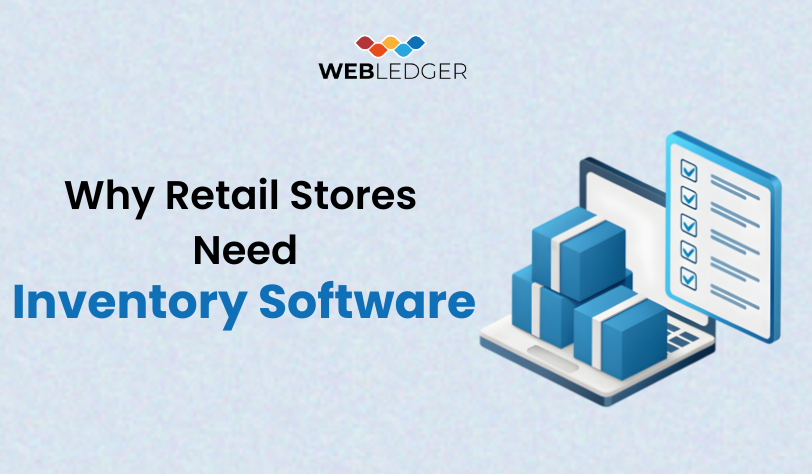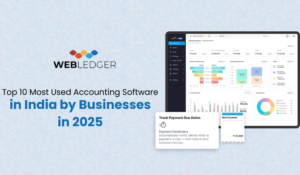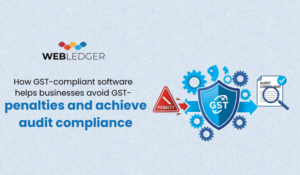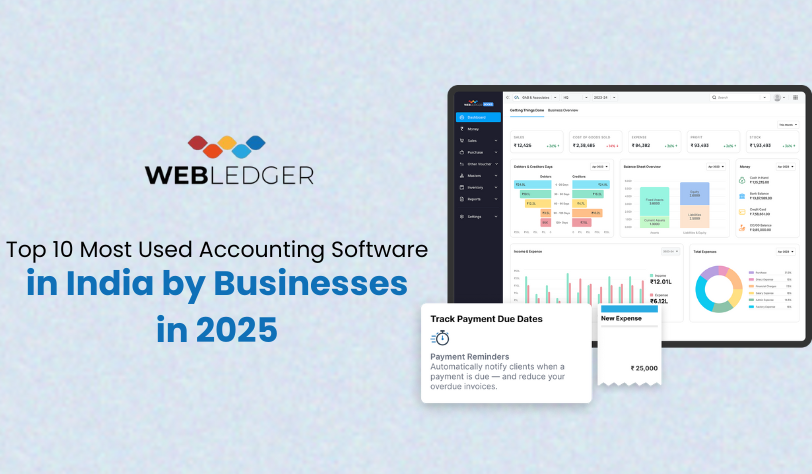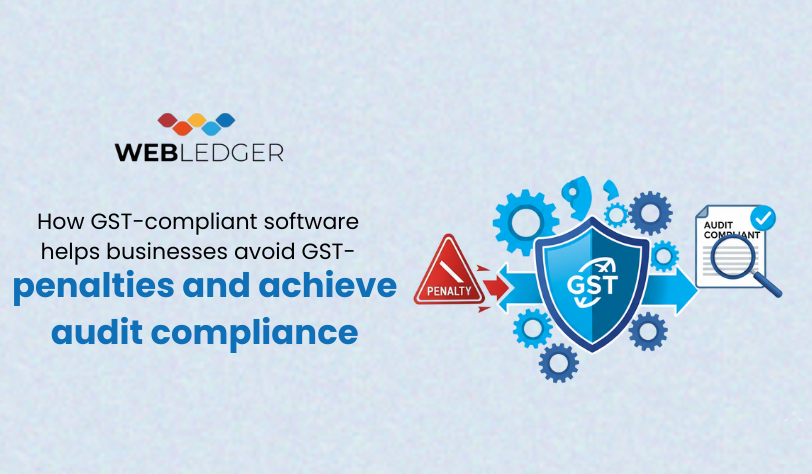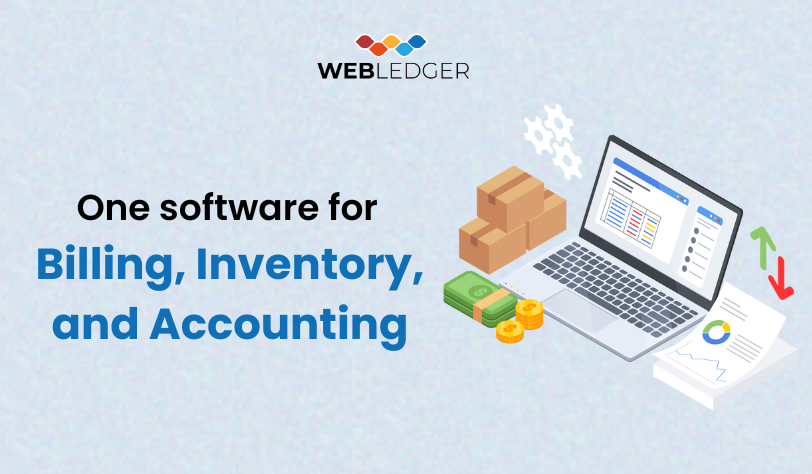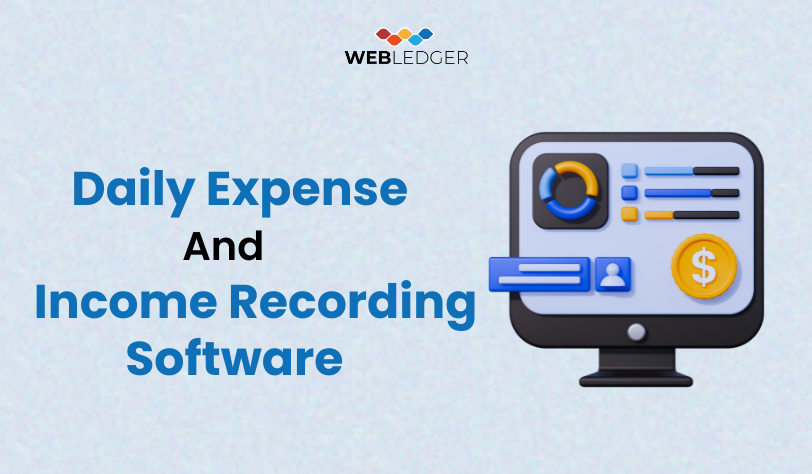Inventory Software for Retail Growth
Staying ahead of the masses involves more than offering great products. You have to know what you’ve got, where it is, and what sells for most retail companies, particularly those with a poor tracking system. That’s where retail inventory software comes into the picture.
If you are still counting on spreadsheets, manual counts, or gut feelings to control stock, you are probably losing money and opportunity for growth. It’s not just about striking technology, but it’s about making your retail business more efficient, profitable, and less stressful.
We at WebLedger Books are aware of the problems retail companies encounter. We are familiar with the way proper tools could easily transform a failing store into a successful one. Let us discuss how a retail inventory program, particularly when attached to a POS system and capable of tracking stock and sales, could be the difference your business is looking for.
The Hidden Costs of Poor Inventory Management
Before we sing the praise of inventory software, let’s touch on the issues it addresses. Without a system, you may encounter:
- Overstock and Dead Stock: It is cash-locked-in products that are not selling. It occupies storage space and typically has to be sold off at heavy discounts, which eats into your margins. For instance, lots of winter coats in July are dead stock.
- Understocking and Lost Sales: Being out of best-sellers will lose you those customers who will then turn to your competitors. You miss that point-of-sale sale and might lose customer loyalty.
- Shrinkage (Theft and Errors): Pilferage, employee theft, and receiving or sales clerical mistakes shrink your profit. Without proper tracking, it’s difficult to detect and resolve these issues.
- Wasted Resources and Time: Manual inventory counts are time-consuming and prone to errors. This time can be better utilized in customer service, marketing, or planning.
- Incorrect Financial Reporting: When your inventory figures are incorrect, your profit and loss accounts will be incorrect, too. This makes it difficult to make sound business decisions.
- Unhappy Customers: Nothing annoys customers more than viewing a product online or in an advertisement, only to discover when they arrive at your store that it is out of stock.
These are serious problems that can hurt your bottom line.
What is Retail Inventory Software and How Does It Help?
Retail inventory software allows you to track each item in your store from the moment it enters until it’s sold or it leaves your hands. It substitutes manual, laborious tasks with digital automation.
Here’s why:
-
Accurate Stock Management: Know Your Numbers
You can get real-time, up-to-date data on each product you sell. This is essential for efficient stock management.
- Item Detailed Catalog: With WebLedger Books, you can add items to your catalog in no time and modify details such as type, name, quantity, price, and balance. Every product has a distinct digital record, which makes it simple to track.
- Group Your Items: Arrange your inventory by creating groups of items. Sort by brand, category (such as “Men’s Apparel” or “Home Goods”) or seasonal collections, which simplifies reporting and analysis.
- GST Details Integration: Adding GST details on every item assists in tax calculations and reporting, maintaining compliance for Indian businesses.
- Detailed Item Description: You can include detailed descriptions for every item. This aids internal records and is useful if you are linking to an e-commerce solution or require product specifications instantly.
- Real-time Inventory Quantities: As you sell products or bring new stock through your POS system, the inventory software automatically updates stock quantities. You never have to guess how much you have on hand.
- Automatic Reorder Points: Use historical sales data and lead times to establish automatic reorder points. The system can alert you when stock reaches a certain threshold, preventing stockouts.
- Batch and Lot Number Tracking: For food and electronics types of industries, batch or lot number tracking assists in recalls or product quality control.
-
Efficient Sales Tracking through a Solid POS System
Your inventory system performs optimally when it is integrated with a solid Point of Sale (POS) system. This is where the sales take place, and your inventory is updated.
- Smooth Transactions: When a customer purchases an item, the POS system documents the sale, computes the amount, processes payment, and deducts items directly from your inventory straight away. This reduces manual updating and lessens errors.
- Reliable Sales Information: Every transaction provides you with good sales information, enabling you to know what best sells and when.
- Customer Management: Most POS systems allow you to gather customer data, associating sales with specific customers. This is beneficial for loyalty schemes and direct marketing.
- Multiple Payment Options: An advanced POS system accepts various payment modes, ranging from cash and card to mobile payments, providing a seamless checkout.
- Employee Performance Tracking: Some POS systems allow you to track sales by employee, enabling you to identify high-performers and underachievers.
-
Smart Reporting for Smarter Decisions: Your Business Companion
Reporting capabilities make data strong. WebLedger Books assists you in preparing inventory reports and summaries to transform raw data into meaningful insights.
- Inventory Summary Reports – See your inventory clearly, including:
- Item Opening Balance: Understand the value of your stock at the start of a period.
- Inward of Goods: Monitor incoming stock, such as quantity, price, and total cost. This is useful for managing supplier relationships and checking deliveries.
- Outward of Goods: View all outgoing stock, like sales, returns to suppliers, or shipments to other warehouses.
- Sales Performance Reports: Inspect your sales data to discover:
- Best-selling products: Target marketing and restocking what customers desire most.
- Slower-moving merchandise: Pinpoint merchandise which isn’t selling to plan promotions or potential removal from stock.
- Busiest times of day: Know the busiest times to optimize staffing and advertising.
- Sales trends: Identify seasonal patterns or trends to get inventory and buying adjusted.
- Profitability Reports: By blending cost information with sales information, you can calculate profitability on specific products and in your entire store.
- Shrinkage Reports: Compare your actual counts against the information in your system to look for discrepancies. This assists you in tracking potential theft or mistakes.
- Supplier Performance Reports: Monitor which suppliers ship on time and offer quality value. This data can be used to negotiate better prices and create more solid relationships.
-
Efficiency and Cost Savings: More Than Just Numbers
With retail inventory software, there are definite advantages in efficiency and cost savings:
- Less Manual Labor: No more laborious manual tallies or data entry. Automation frees your employees to assist customers and other valuable tasks.
- Improved Buying: With reliable data, you buy only what you need and when you need it. This prevents overstock, decreases the cash trapped in stock, and eliminates expensive last-minute purchases.
- Better Cash Flow: By reducing unnecessary inventory and streamlining your buying, you can release funds to spend elsewhere in your business.
- Quality Customer Experience: Customers are more satisfied when the products they wish to buy are available. Easy and fast checkout experiences, courtesy of the POS system, also boost satisfaction.
- Better Security: Monitoring each and every item and transaction makes a digital record that prevents theft and makes it simpler to fix any problems.
- Expandability: As your business expands, a solid inventory system can simply scale to handle more products, transactions, and even more than one store location.
WebLedger Books: Your retail business partner
We understand at WebLedger that small to medium-sized retail companies require simple and inexpensive solutions combined with strong features. Our system is easy and straightforward to use, allowing you to get started fast with no complex learning process.
With WebLedger Books, you are able to:
Add items to your catalog with ease: Enter crucial information such as item type, name, series, opening quantity, opening rate, opening balance, GST data, and a concise description.
Organize products with item groups: Enhance your catalog for better reporting and management.
Obtain a complete inventory summary: Make detailed reports on item opening balances, received goods, and shipped goods (all by quantity, rate, and value). This provides you with a clear picture of your stock flow and financials.
We think that great retail inventory control, backed by smart stock management and correct sales monitoring, must be an option available to every retail store. It’s not merely about figures; it’s about enabling you to make informed decisions, serve your customers better, and develop your business in a healthy manner.
Conclusion
In the competitive retail environment of today, sticking to old ways can keep your business stationary. New retail inventory software is not only an improvement; it’s an essential investment for your future. It converts chaos to order, conjecture into smart decisions, and possible losses into real profits.
Don’t let poor inventory control and vague sales tracking hinder your retail business from flourishing. Learn how WebLedger Books can make your operations simpler, increase your profits, and let you feel in command of your inventory. Begin your path to a more streamlined, efficient, and more profitable retail business today.
Register and schedule a free demo today of WebLedger Books to learn more. Learn more about it on our website.
